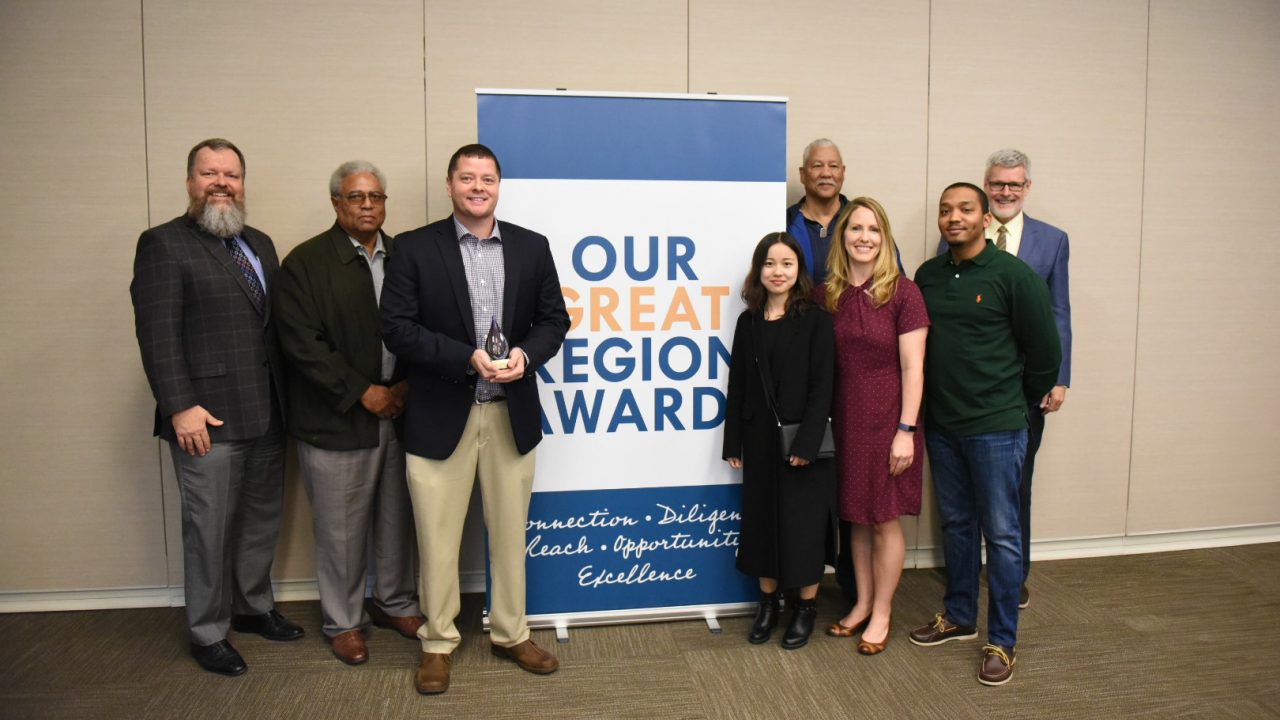APLA Alumnus Galen Newman Named ASLA Fellow
The School of Architecture, Planning and Landscape Architecture (APLA) congratulates Dr. Galen Newman on his elevation to the Council of Fellows of the American Society of Landscape Architects (ASLA).

Newman is internationally renowned for his work on community resilience and urban regeneration. His impact on the landscape architecture profession is evident in his high citation count: more than 2,300 citations and growing.
Newman is professor and head of the Department of Landscape Architecture and Urban Planning at Texas A&M University, one of the youngest department heads ever at College Station.
The designation of Fellow is reserved for those professionals who have made extraordinary contributions to their professions in the areas of creative work, leadership, service and knowledge. According to Barbara Deutsch, FASLA, CEO of the Landscape Architecture Foundation, “Dr. Newman is a relevant and influential thought leader. He has built an important body of knowledge spanning green infrastructure, performance modeling and vacant land reuse to matters important to the discipline. He takes on advanced and complex challenges and goes above and beyond what is typically expected to produce truly exceptional work through his ability to manage large multi-disciplinary and collaborate research teams.”

Newman uses a unique, evidence-based approach incorporating land use science, Geodesign and landscape performance to help fulfill his passion for assisting underserved, flood-prone and depopulating communities, especially those affected by climate change.
Newman’s work has helped created several internationally applied tools, including a scorecard for measuring the alignment networks of plans, a model to predict urban decline and a framework for deep engagement for increasing flood resilience, which has helped many of the under-resourced communities he has worked with receive millions in funding to improve their local conditions. The work he has contributed to has been recognized with almost 40 different national, state and local awards.
Newman integrates his research into the classroom to promote critical thinking and give students a high-impact experience. He teaches students to create evidence-based, green, infrastructure-based interventions that help solve local problems and assist residents in procuring funding for their implementation.
Although he didn’t start out planning to be a landscape architect, Newman is grateful to have established a career in such an impactful discipline.
“I started out in film and broadcasting, then I switched to marketing,” he shared. “But a summer job at a landscaping firm opened my eyes to the profession and its possibilities. I knew then I wanted to work in landscape architecture and community planning.”
He received a bachelor’s in environmental design from the College of Architecture, Design and Construction in 2003 before pursuing his two master’s degrees from Auburn in 2006—a Master of Landscape Architecture and a Master of Community Planning. He earned a Ph.D. in Planning, Design and the Built Environment from Clemson University in 2010.
Newman has accumulated a tremendous track record of publication, presentations and grants.
“I got a slow start publishing when I first came to work at Texas A&M,” Newman said. “I didn’t publish anything for the first two years, which was beginning to be a problem, because A&M is such a hard-core research school. I had to learn how to write for publication.”
Once he got the hang of it, Newman has been incredibly prolific. He has published 116 journal articles, two books and 17 additional book chapters. He has made 135 conference presentations and has, in addition to a number of service-learning projects, received 47 grants totaling almost $60 million in funding.

According to Google Scholar, Newman is the most-cited scholar for research on landscape performance, second most-cited in flood mitigation, fourth in Geodesign, fifth in land use science and one of the 20 most-cited landscape architects overall.
Much of his work has been directed to support the regeneration of vacant lots and the lessening of flood risks in underserved communities. His primary impacts on the field have come from engagement-based work in flood-prone, environmental justice communities most affected by flooding, climate change and economic distress from depopulation.
In the Houston-area neighborhoods of Manchester, Sunnyside, South Park and Galena Park, for instance, more than 80 percent of the population is non-white, with an average income of $30,000. The areas are at high flood risk and suffer from community health issues, like cancer clusters and elevated asthma rates, from excessive exposure to industrial contaminants.
“East Texas is flood-prone,” Newman said, “and neighborhoods like these are located near petrochemical plants that leave chemicals like benzine in the soil that floods spread.”
Newman’s team held a series of deep engagement sessions with the local community to develop master plans and project the impacts of the proposed interventions through performance modeling. The outputs showed significant runoff reduction and decreases in pollutant load. As a result, the areas received $13 million in grants to implement provisions of the plan.

Newman appreciates the foundation Auburn provided, as well as the mentoring he’s received from Auburn faculty such as Professor Charlene LeBleu in the years since the left the Plains.
“My Auburn family has really stuck behind me, and for that, I’ll always be grateful.”
See more in:
Alumni,
Alumni Recognition,
Industry Recognition
Related people:
Charlene LeBleu